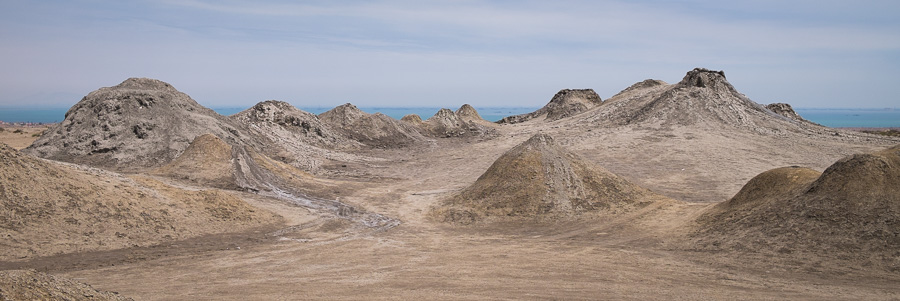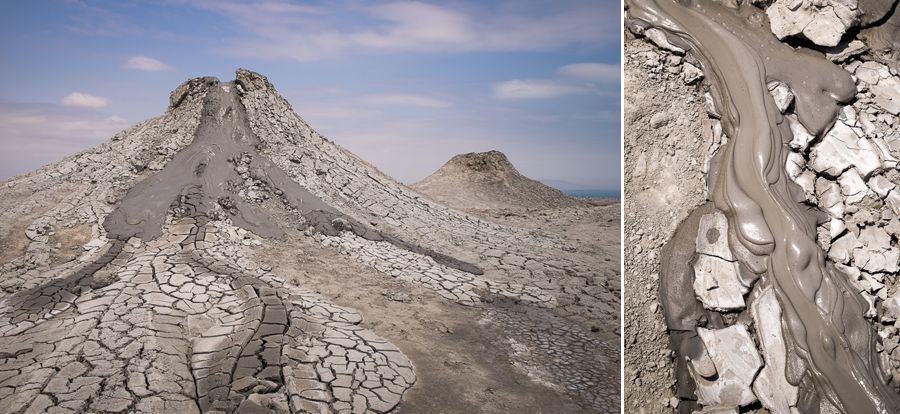The other quick stop we did in Azerbaijan was to the mud volcanoes (otherwise known as sedimentary volcanoes). These weren’t too far from the Gobustan Petroglyphs in fact, and were definitely worth the quick side-trip to see.
It’s an amazing, moon-like landscape, with the Caspian Sea in the background

with both fresh and baked mud making amazing patterns around the volcanoes.

It is oddly satisfying watching the volcanoes bubble and plop (yes, it was quite windy)
[evp_embed_video url=”http://lisagermany.com/wp-content/uploads/2017/08/mudvolcano.mp4″]
[evp_embed_video url=”http://lisagermany.com/wp-content/uploads/2017/08/mudvolcano1.mp4″]
but the most amazing thing is that the mud is cold! I tentatively dipped a finger into it and was most surprised to find this out! I couldn’t for the life of me figure out how that could be, but a later Google search revealed that these types of volcanoes are found throughout oil and gas regions and are an indicator of deeply buried gas reserves. The volcano is essentially a release channel for the pressurized gas, mineral water and mud. Apparently, they can ignite underground (they exist because of the gas after all) and be explosive, but the day we visited these ones just quietly bubbled away.

Azerbaijan is home to a large fraction of the mud volcanoes in the world, a few of which are constantly on fire. This is what is thought to have brought the Zoroastian religion (the predominant religion across Central Asia before Islam) to Azerbaijan over 2000 years ago.
Weird!